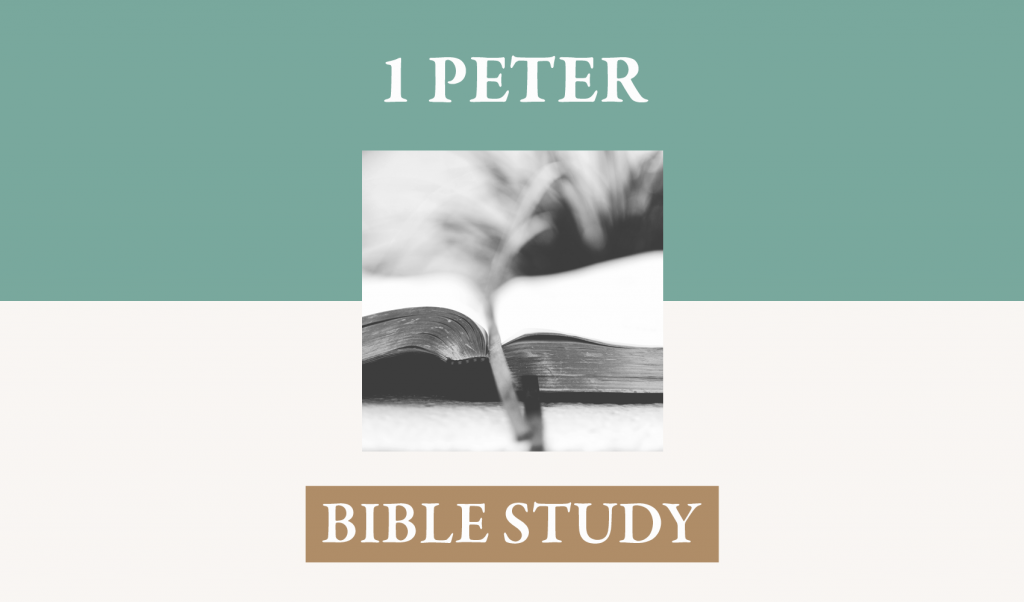Week of February 11, 2018
The Point: As servants of Christ, we are His representatives.
The Identity of God’s People: 1 Peter 2:4-10.
[4] As you come to him, a living stone rejected by men but in the sight of God chosen and precious, [5] you yourselves like living stones are being built up as a spiritual house, to be a holy priesthood, to offer spiritual sacrifices acceptable to God through Jesus Christ. [6] For it stands in Scripture: “Behold, I am laying in Zion a stone, a cornerstone chosen and precious, and whoever believes in him will not be put to shame.” [7] So the honor is for you who believe, but for those who do not believe, “The stone that the builders rejected has become the cornerstone,” [8] and “A stone of stumbling, and a rock of offense.” They stumble because they disobey the word, as they were destined to do. [9] But you are a chosen race, a royal priesthood, a holy nation, a people for his own possession, that you may proclaim the excellencies of him who called you out of darkness into his marvelous light. [10] Once you were not a people, but now you are God’s people; once you had not received mercy, but now you have received mercy. [ESV]
“[4] The present paragraph is challenging to interpreters since it is stocked with Old Testament allusions and citations. The first allusion emerges when Jesus is identified as a living stone. That Jesus is the stone is confirmed by the Old Testament references that follow in verses 6-8. Jesus is doubtless called the living stone because of His resurrection. Peter probably drew this theme from Psalm 118:22, where the stone rejected by the builders becomes the cornerstone. In Acts 4:11 Peter appealed to this same verse to refer to Christ’s death and resurrection/exaltation. The argument in Acts 4:10-11 demonstrates the connection. The religious leaders despised Jesus by crucifying Him. But God made Him the cornerstone by raising Him. Such a reading of Psalm 118:22 stems from Jesus Himself in the parable of the tenants [Matt. 21:33-46]. The tenants slay the son to possess the inheritance – a clear reference to the crucifixion of Christ – fulfilling the prophecy that the builders would reject the cornerstone [Matt. 21:42]. Matthew implied, however, that the slaying of Jesus is not the last word, for He becomes the cornerstone, which almost certainly points to His resurrection. Peter continues to be informed by Psalm 118, for as the cornerstone of the building was rejected by the builders, so also Jesus was rejected by human beings. In Acts 4:10-11 – where Peter also cited Psalm 118 – it seems that the rejection of Jesus as the cornerstone was fulfilled in His death, whereas His vindication or being honored by God occurred at the resurrection. The same emphasis on Christ’s crucifixion and resurrection of Christ is likely present here as well. The perfect tense of rejected supports the notion of a past action with ongoing results. In God’s sight Jesus was not “rejected” but “chosen” and “honored.” He is God’s chosen and honored Stone, and since this is contrasted with His rejection by human beings, we probably have an allusion to the resurrection and exaltation of Christ. The life of Christ functions as a pattern for the Petrine Christians, for they too are despised by many, but they are chosen and honored in God’s sight, destined for vindication after suffering.
[5] Peter now draws the comparison between Christ as the living stone and believers as living stones. Believers are living stones because of their faith in the resurrected Christ. Jesus’ resurrection life becomes theirs, even while they live in the midst of a hostile world. They await their resurrection at the end of the age, but even now because they have come to Christ [4] they have new life. Nowhere else in the New Testament are believers called living stones, though elsewhere they are described as God’s temple or house [1 Cor. 3:16; 6:19; Eph. 2:19-22; Heb. 3:6]. The picture here is of a house in which believers constitute the building stones. The term house alludes to the temple, which is commonly called a “house” in the Old Testament and is also designated as a house in the New Testament. The house is spiritual because it is animated and indwelt by the Holy Spirit. Despite the hesitation of some scholars, Peter clearly here identified the church as God’s new temple. The physical temple pointed toward and anticipated God’s new temple, and now that the new temple has arrived, the old is superfluous. The point of the text is not that believers are being built into a spiritual house but that they as living stones, as a spiritual house, are being built up. The purpose of such building is that they function as a holy priesthood. The passive being built up signifies that God is the one building the church so that it will be a holy priesthood. The notion of the church as a priesthood anticipates verse 9. Peter was not thinking mainly of each individual functioning as a priest before God. The focus here is on the church corporately as God’s set-apart priesthood in which the emphasis is likely on believers functioning as priests. Western believers tend to individualize the notion of priesthood rather than seeing the community emphasis. In the Old Testament the priestly caste was limited to the tribe of Levi, and in that sense only a portion of Israel could carry out the priestly function. All of God’s people are now His priests. Despite the emphasis on the corporate priesthood, what Peter said applies by implication to individuals as well. That is, all believers have direct access to God by virtue of the cross and resurrection of Jesus Christ. We must avoid, however, focusing on the individual, for Protestants are prone to individualize the text in a way that blunts or even denies its corporate emphasis. The purpose of the holy priesthood is to offer spiritual sacrifices. Spiritual sacrifices are required, meaning that they are sacrifices offered by virtue of the work of the Holy Spirit. What sacrifices in particular were in Peter’s mind? The parallel with 2:9, where the royal priesthood proclaims God’s wonders, suggest to some that this is the primary function of the priesthood. The priestly calling of the church is understood from 2:9 to be evangelistic, a praising of God’s name so that people from all over the world will join in worshiping Him. Nevertheless, we should not limit the sacrifices here to any one item, for everything that is pleasing to God is probably included. Peter spoke generally and comprehensively of all that believers do by the power of the Holy Spirit. Indeed, not any and every sacrifice is pleasing to God, but only those offered through Jesus Christ.
[6] Peter now uses Old Testament citations to provide an explanation or restatement of what precedes. Peter used an introductory formula, it stands in Scripture, for the scriptural citation. The text cited is from Isaiah 28:16. In context Isaiah 28 is a message of judgment on Ephraim for their disobedience and unbelief. What Isaiah emphasized throughout the book comes to the forefront here. Those who trust in the Lord will escape judgment. Isaiah encouraged the people not to put their trust in foreign alliances or military strength, but only the Lord. Those who do not trust in Him will perish, but those who put their faith in Him will triumph. The meaning of the citation is crucial for our purposes. God has appointed Christ as a stone in Zion. He is God’s elect and honored cornerstone. That is, the entire building (i.e., the church) takes its shape from Him. The Old Testament citation repeats the two terms chosen and precious from verse 4. God made Jesus the cornerstone of the building when He raised Him from the dead. So the appointment in view here focuses on Christ’s resurrection, which revealed that He was chosen and honored by God. The word cornerstone is understood by some as referring to the top stone in a building of the keystone in an arch. This interpretation should be rejected, for the reference to stumbling in verse 8 indicates that a stone on the ground is intended. The reference to believes in him restates the idea of coming to him in verse 4. What Peter emphasized in citing this verse is that the one who believes in Christ will not be put to shame. Just as Christ is the chosen and honored one of God and was so honored at His resurrection, so too believers will be vindicated on the last day. What is true of the Christ is also true of His people. They will not experience the embarrassment of judgment but the glory of approval. The phrase will not be put to shame, therefore, is another way of saying they will be precious or honored.
[7] Peter now draws an inference (so) from verse 6 for believers. By honor Peter meant final vindication on the day of judgment (see v. 6: will not be put to shame). This is confirmed in verse 7, where Peter referred to the eschatological honor that belongs to Jesus Christ on the last day and correspondingly to believers in Him. Just as Christ was honored by the Father at the resurrection, so those who trust in Him will be honored on the last day, even though presently they are suffering. We should also note that Peter has now used the verb for believing twice in the last two verses, reminding us again that the emphasis on faith in chapter 1 [5,9] should be interpreted in terms of trusting God and not just faithfulness. Of course, the latter idea is present as well, but faithfulness always flows from trust, and the two can never be reversed. Conversely, those who disbelieve will face shame and dishonor on the last day. The reason for this is that the stone that was disregarded by the builders has become the very cornerstone of the building. The establishment of the cornerstone likely refers to the resurrection of Jesus Christ. He has been vindicated by God and is the stone from which the building made of God’s people takes shape. Peter cited Psalm 118:22 at this juncture, and this psalm is cited often in the New Testament [Matt. 21:42; Mark 12:10-11; Luke 20:17; Acts 4:11]. The psalm in its original context describes the return of the king to the temple to give thanks after his victory over his enemies. The stone rejected in the historical context of the psalm was the Davidic king, and the builders were the foreign nations that rejected the rule of the anointed king of Israel. The enemies of Israel thereby assured their own destruction, for the Davidic king was the stone by which Yahweh would carry out His plan in the world. Hence, the king cuts off God’s enemies with confidence [Ps. 118:10-14]. Both Jesus and Peter [Matt. 21:42; Acts 4:11] applied the psalm in a surprising way. The builders who reject the anointed king are not foreigners but the religious leaders of Israel. The religious leaders believe they are building God’s building, but they have rejected the cornerstone for the entire edifice. By doing so they are behaving like the pagan nations of David’s day and have assured their own judgment, for God has established Jesus as the cornerstone by virtue of His resurrection and hence vindicated Him. God has vindicated and honored Jesus [4,6], even though people have rejected Him [4,7]. Those who disbelieve in Him will face judgment.
[8] Verse 8 continues the thought from verse 7. We can summarize the verses as follows: Those who disbelieve stumble over the stone, who is Christ. They stumble over Christ because they refuse to believe in Him and obey Him. People who stumble and disobey are responsible for their refusal to trust in Christ, and yet God has appointed, without Himself being morally responsible for the sin of unbelievers, that they will both disobey and stumble. The stone that sits at the head of the corner is one over which the disbelieving stumble and fall. Peter alluded to (rather than cited) Isaiah 8:14 here. In the context of Isaiah 8, Israel and Judah are called upon to fear and trust the Lord rather than fear other nations. Apparently this section of Isaiah was important to Peter since he also alluded to Isaiah 8:12 in 1 Peter 3:14. He likely found it to be relevant to his readers since the churches in Asia Minor were tempted to fear those who mistreated and persecuted them. Peter then explained why some stumble and fall over the cornerstone. They fall because they disobey the word. The word here is the gospel – the same word God uses as a seed to beget new life [1:23-25]. Disobey is complementary to not believe in verse 7. The two cannot be finally separated, though the latter is the root of the former since all disobedience flows from a failure to trust God. Their stumbling over the cornerstone is not accidental, as humans often trip unintentionally while walking. In this instance humans stumble because of rebellion, because they do not want to submit to God’s lordship. Peter added a provocative comment to conclude his comments about the disobedient, as they were destined to do. The verb translated destined often refers to what God has appointed to occur. The pronoun as refers back to the entire thought that precedes. God has not only appointed that those who disobey the word would stumble and fall. He has also determined that they would disbelieve and stumble. The idea that calamity also comes from God is often taught in the Old Testament. The worldview of the Scriptures is that God is sovereignly in control of all things, from the decisions made by kings to the throw of the dice. Even the cruelest and most vicious act in history – the execution of Jesus of Nazareth, was predestined by God. It is imperative, however, that we add immediately another element of the biblical worldview. Biblical writers never exempt human beings from responsibility, even though they believe God ordains all things. Peter indicted those who crucified Christ, even though the execution was predestined by God Himself [Acts 2:23]. It seems fair to conclude that Peter indicted them because in killing the Christ they carried out their own desires. They were not coerced into crucifying Jesus against their wills. No, in putting Him to death they did just what they wanted to do. Similarly, Peter criticized those who stumble over Christ the cornerstone for their unbelief and disobedience. He did not argue that their unbelief is free from any guilt because it was predestined. He had already emphasized that they chose not to obey Him and that they refused to believe in Him. Peter articulated a common theme in the Scriptures that human beings are responsible for their sin and sin willingly, and yet God controls all events in history. The Scriptures do not resolve how these two themes fit together philosophically, though today we would call it a “compatibilist” worldview. We must admit, however, that how this fits together logically eludes us, and hence theologians have often fallen prey to the temptation to deny one or the other truth. Why did Peter emphasize the theme of God’s sovereignty here? He did so to comfort his readers, assuring them that the evil in the world is not sundered from God’s control. God still reigns, even over those who oppose Him and the Petrine believers.
[9] The But beginning verse 9 is most naturally understood as a contrast to what immediately precedes. God has appointed the disobedient to destruction, but on the contrary believers are a chosen race. They belong to God’s people because they have been elected, chosen by Him. God’s elect nation is no longer coterminous with Israel but embraces the church of Jesus Christ, which is composed of both Jews and Gentiles. The privilege of belonging to God’s people is conveyed by Peter with a number of Old Testament allusions. Peter drew on Exodus 19:6, using the exact words found there in identifying the church as a royal priesthood. In Exodus the title applies to Israel, with whom God enacts His covenant at Sinai. Israel’s priesthood was such that they were to mirror to the nations the glory of Yahweh, so that all nations would see that no god rivals the Lord. Unfortunately, Israel mainly failed in this endeavor as the Assyrian (722 B.C.) and Babylonian (586 B.C.) exiles demonstrate. The reason for the exile is that Israel failed to keep God’s law. Note God’s kingdom of priests consists of the church of Jesus Christ. It too is to mediate God’s blessings to the nations, as it proclaims the gospel. We should note the comparison and contrast here. Both Israel as a whole and the church of Jesus Christ are identified as a royal priesthood. There is no suggestion that only a portion of Israel served as priests in Exodus 19. The difference is not the extent of the priesthood but its identity, for now the royal priesthood is the church of Jesus Christ [Rev. 1:6]. As noted above, the priesthood here is corporate in nature, and yet this does not rule out the truth that individuals serve priestly functions. Peter also replicated the exact words of Exodus 19:6 in identifying the church as a holy nation. The church of Jesus is a people now set apart for the Lord, enjoying His special presence and favor. The next phrase, a people for his own possession, does not allude as clearly to any Old Testament text. The term is used in Malachi 3:17 of believers who respond to the Lord’s rebuke and live righteously, and so in contrast to the wicked they constitute His possession, His special people. Again the privileges belonging to Israel now belong to the church of Jesus Christ. The church does not replace Israel, but it does fulfill the promises made to Israel; and all those, Jews and Gentiles, who belong to the true Israel are now part of the new people of God. The purpose of the people of God is now explained. God has chosen them to be His people, established them as a royal priesthood, appointed them as a holy nation to be His special possession, so that they would proclaim the excellencies of him who called you out of darkness into his marvelous light. As God formed Israel to praise Him, now the church has been established to praise His wonders. God’s ultimate purpose in everything He does is designed to bring Him praise. The declaration of God’s praises includes both worship and evangelism, spreading the good news of God’s saving wonders to all peoples. They proclaim God’s praises for calling them out of darkness into his marvelous light. This is a description of their conversion and employs the language of Genesis 1, where God utters the word and light becomes a reality, pushing back the darkness. Paul used the same picture of conversion in 2 Corinthians 4:6, where God shines in the heart of His people to give them knowledge of His glory through Jesus Christ. Conversion is often depicted in the New Testament as a transfer from darkness to light [Acts 26:18; 2 Cor. 4:6; Eph. 5:8; 1 Thess. 5:4,5,8]. The calling described here is effectual. Just as God’s word creates light, so God’s call creates faith. Calling is not a mere invitation but is performative, so that the words God speaks become a reality. The beauty and glory of the new life is conveyed by the image of light in contrast to darkness. Hence, Peter identified the light as marvelous.
[10] Verse 10 returns to the status of the Petrine churches as God’s people. Peter alludes to the words of Hosea 2:23 here. In Hosea, Israel is repudiated as God’s people because of their sin, but God pledges to have mercy upon them and form them again as His people. Such has been the experience of the church of Jesus Christ. The Petrine churches were composed mainly of Gentiles, living in darkness [2:9], but now wondrously they are God’s people. They did not deserve inclusion into God’s people, but they have now received His mercy and rejoice at their inclusion. The message of mercy that opened the letter at 1:3 now closes a major section of the letter in 2:10. Peter reminded the readers again that they are recipients of God’s grace, that the foundation for obeying the imperatives is God’s mercy in Christ.” [Schreiner, pp. 103-116].
Questions for Discussion:
- What does it mean that Jesus is called a living stone and a cornerstone? What terms does Peter use to describe this living stone and cornerstone? Why is this living stone both rejected and chosen? How does Peter see the life of Christ functioning as a pattern for believers? In what sense are believers living stones? Where does their life come from?
- What terms does Peter use to describe believers as living stones [9]? What do these terms tell us concerning what it means to believe in Jesus? What does Peter say is the work of the believer [9, that]? Note that Peter’s emphasis here is not on individual believers working alone but on their corporate work together in the church (spiritual house). How can your church proclaim the excellencies of him who called you out of darkness into his marvelous light?
- Contrast the actions and destinies of believers and unbelievers in this passage [7,8]. What role does God’s mercy [10] play in these contrasting actions and destinies?
- Why did Peter emphasize the theme of God’s sovereignty here? What indications of God’s sovereignty do you find in these verses? Remember that Peter is writing to a suffering church. How would a firm belief and trust in God’s sovereignty comfort and support Peter’s readers? How does a firm belief and trust in God’s sovereignty comfort you while enduring the trials and hardships of this fallen world?
References:
The Message of 1 Peter, Edmund Clowney, Inter Varsity.
1 Peter, Karen Jobes, ECNT, Baker.
1, 2 Peter, Jude, Thomas Schreiner, NAC, B & H Publishers.





















